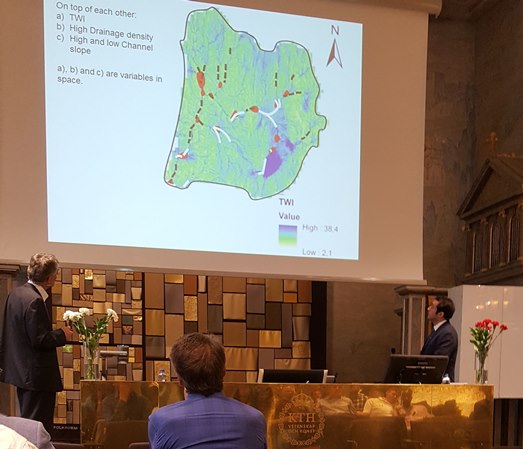Road disasters? Modeling and assessment of Swedish roads within crucial climate conditions
Dissertation

Alireza Nickman defended his thesis
Time: Fri 2016-06-03 10.00
Location: Kollegiesalen, Brinellvägen 8, KTH
Subject area: Land and Water Resources Engineering
Doctoral student: Alireza Nickman
Opponent: Associate professor Nils-Otto Kitteröd, The Norwegian University of Life Sciences
Supervisor: Professor Bo Olofsson
Abstract
An efficient maintenance of roads to ensure high accessibility and durability of the transport capacity requires an understanding of how the hydrological response depends on both the road and the landscape characteristics. New methods and data were used to identify and explain interaction between roads and surrounding environment and their influence on hydrologic responses both in watershed scale and road-section scale. In the watershed scale, flood hazard probability was made with reference to the most influential physical catchment descriptors and road characteristics. Additionally, a physical based model was used to estimate the effect of road topography on the hydrological responses of 20 watersheds to storms with different intensities. A simple method was developed and discussed to address flood risk probability in the road-stream crossings concerning the correlation between the quantities of the physical catchment descriptors and occurrence/absence of flooding. The most influential factors in describing the probability of flooding along the roads were topographic wetness index, soil properties, road density and channel slopes. A detailed study of simulated flow duration curves showed differences between the 20 watersheds for three different storms based on topography with and without roads. An increase in peak flow and reduced time to pick occurred with existence of roads and increased storm intensity.In the road-section scale, an uncertainty-based simulation approach was used to identify the most influencing processes in controlling the dynamics of the groundwater level. A model (CoupModel) set up with four different geological stratifications was made to model two positions in a slope upstream of a road with drainage pipes and ditches. Results from the simulations indicate the significance of precipitation rate, road drainage and position in hillslope, and soil properties and stratifications in controlling groundwater levels. The same model was also applied to simulate soil moisture and temperature dynamics in two road sections by using groundwater and climate data. Porous media properties were obtained as statistical distribution function that provided the best performance of moisture and temperature dynamic in the road layers and underlying soil.
The research was hosted by the Division of Land and Water Resources Engineering , KTH. The dissertation can be found here .
